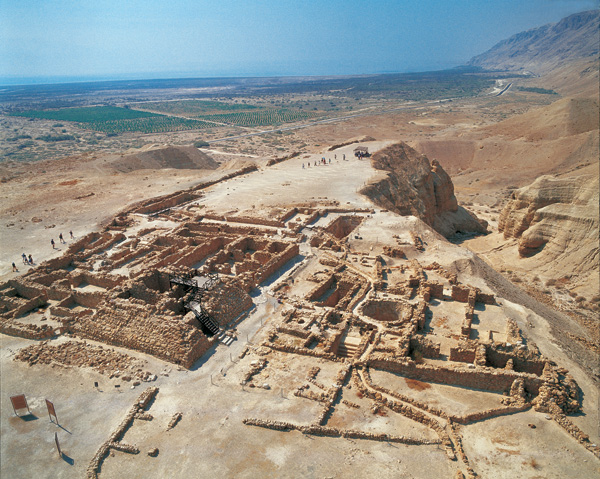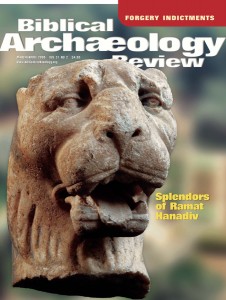Qumran in Light of Ramat Hanadiv
Sidebar to: A Country Gentleman’s Estate

The only archaeological site in the immediate vicinity of the caves where the Dead Sea Scrolls were discovered is known as Qumran. Most Dead Sea Scroll scholars and archaeologists interpret Qumran as the remains of a settlement of Essenes, a group of Jews who rejected the authority of the priests of the Jerusalem Temple. Although some Essenes lived in Jerusalem, others lived an isolated, ascetic life at Qumran, which is thought to have been a monastery-like religious community of Essene men. We know about the Essenes because they are described by the first-century Jewish historian Josephus and by the contemporaneous Jewish philosopher Philo of Alexandria. The name Essenes does not appear in the scrolls themselves, however. The Roman polymath Pliny the Elder says Essenes lived at a site he locates in relation to Ein Gedi, which is 10 miles south of Qumran on the Dead Sea.
The reigning Essene hypothesis—that the scrolls represent an Essene library produced at least in part at Qumran—was first enunciated by Roland de Vaux, a Catholic priest from the Ecole Biblique et Archéologique Française in Jerusalem, who excavated Qumran in the 1950s. It has been widely adopted, with some variations, by other scholars, including Harvard’s Frank Cross, who twitted those scholars who exercised “extreme caution” in linking Qumran with the Essenes: “I prefer to be reckless and flatly identify the men of Qumran with their perennial houseguests, the Essenes,” Cross wrote.
Already a library member? Log in here.
Institution user? Log in with your IP address.

